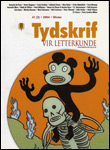The politics of narrating Cinderella in Namibia
DOI:
https://doi.org/10.4314/tvl.v41i2.29675Keywords:
Cinderella, Namibia, oral traditionAbstract
This article reports on variations of the Cinderella fairytale as told by two southern Namibian storytellers, Martha Frederik and Katrina Louw. The analysis concentrates on the self-imagery of these storytellers as reflected in their performances. Although their stories are not overtly political they interpret their social environment, the relationships between men and women and employment interactions. In this sense these narratives communicate deeper dimensions of Namibian colonial relationships. Life in the towns of Aranos and Gochas is uninspiring, since these are small agricultural supply stations, settled in the mostly arid, sparse, semi-desert southern region of Namibia, Hardap. These communities are generally dirt poor, inhabited mainly by the unemployed, children, women and pensioners. The article further explores facets of the Frederik and Louw's re-interpretations of Cinderella. A few salient sections in especially the performance of Frederik are selected to demonstrate how the storytellers reconstruct their experience of life. Both texts are adapted intuitively to the storytellers' social circumstances and lived experience. The article concludes that it is through the exploration of such narrative experiences that the dialogical relationship between the powerful and the powerless can be understood.
Downloads
References
...
Downloads
Published
Issue
Section
License
Copyright (c) 2004 Tydskrif vir Letterkunde

This work is licensed under a Creative Commons Attribution-ShareAlike 4.0 International License.


 https://orcid.org/0000-0001-6465-6584
https://orcid.org/0000-0001-6465-6584


.png)